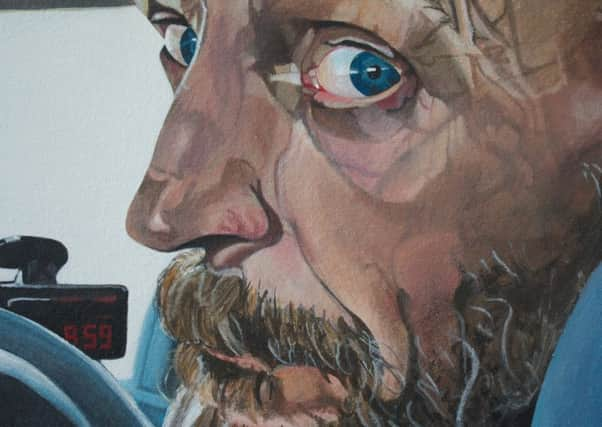Art review: Gray's School of Art Degree Show 2016, Aberdeen


While painting remains a separate degree, the other disciplines hav e been brought together under the banner of Contemp orary Art Practice, which incorporates sculpture, printmaking, photography and filmmaking.
Gray’s Degree Show 2016 | Gray’s School of Art, Aberdeen | Rating: ****
Advertisement
Hide AdAdvertisement
Hide AdThis year’s cohort are the second lot of graduates affected by this change, and they seem to embody the transition. Some are very definitely printmakers or photographers; others are working across various disciplines in concept-driven practices, which seems to be what the school wants to encourage. Whether a measure of skill and technique will be sacrificed to this, as it has been elsewhere, it’s still too early to say.
But there is no shortage of ambition in the smallest of Scotland’s four art schools. This year’s students are ambitious both in the subjects they tackle and in the ways in which they engage with them. Eve Montgomerie’s large-format paintings are not only bold statements in terms of scale and technique, but seek to investigate human beings’ capacity for atrocity. Threats lurk under their calm surfaces, from the face in the mirror to the suspicious box half-hidden under the child’s dropped teddy.
Rebecca Grant has hit on a subtle but rather ingenius way of looking at what makes up a human life. Taking seven people of different ages who died in the same year, she marks on graph paper using a manual typewriter (or, occasionally, hand draws) an ‘o’ for each day of their life. It might be cold and mechanical, were it not for the idiosyncracies of ink and paper, and the way the individuals are presented: Olive, 94, Michael, 31, each somehow newly valued by the artist’s painstaking work.
Several are concerned with disconnection: Nick Cronin’s collage of television screens, and his sculptures, explore the city as “grouped isolation”. Callum Corsie’s prints make us smile, and think, with statues from history and antiquity eagerly consulting their smartphones. Others use television news footage to confront the audience with current events: Jiri Krystlik splices graphics with CNN footage from Baghdad under fire to talk about individual responsility in society. Painter Elisavet Christodoulou’s studies of soldiers wounded and disfigured in combat manage to be compassionate as well as addressing the overarching issue of war. None of these ideas are exactly new, but they can sustain plenty of revisiting if the approaches are fresh. Harmony Bury is interested in the relationship of humankind and nature, which is hardly new either, but her approach – flowers made out of butterfly wings and body jewellery made out of beeswings, all beautfiully executed – feels entirely original. Similarly photographer Claire Burnett turns up fresh images with her camera.
Photographer and film-maker Henning Stedtnitz claims: “I don’t have a creative process because I do not create, I document and depict my environment as I perceive it.” But he does himself a disservice, because his clear eye finds patterns and shapes and even stories in the urban landscape, and his short looped films show a canny sense of humour. Another photographer, Will Vernon, presents five poignant portraits of dementia sufferers, recalling the identities they have all but left behind: The Draughtsman, The Beauty Queen, The Stock Controller.
Hannah Halliday’s knitted slogans are a joy, while Dimitra Laina’s straight line clearly has an important concept behind it, though I’m still in the dark about what it is.
Gray’s 16 painters begin to look like a band of desperadoes holding out against onward march of conceptualism, but it feels like they have raised their game in response to the challenge. They are a diverse group, many of whom have developed a mature vision, and have plenty to say. Luke Vinnicombe seems to create an imaginary world, but it is one which looks back sharply and satirically at our own. Isabelle Thomson’s work is based on a journey around Iceland, but translated through her imagination into a beautifully realised story-world with its own characters. Lorna Lorimer paints boats, and also creates fine landscape-collages, reminiscient of Victoria Crowe. For this 16 alone, it would be worth travelling the extra mile to Aberdeen.